A Glossary of Regenerative Culture
This “Glossary of Regenerative Culture” was published by Jenny Andersson in her Medium blog Regenerate The Future on May 26, 2019. Access the original article here.
As new ways of thinking and doing grow, a new language always grows with them. Here are many of the words, phrases and terms you’re likely to find in discussions about a regenerative future.

Active Hope: legendary deep ecologist Joanna Macy’s approach to the volatile, uncertain, complex and ambigious future we face. Not just being blithely hopeful, but digging in with deep commitment to fostering action for the future. Joanna’s Work That Reconnects is a perfect example of how to find active hope; recognise your grief for what we are losing, find your focus — what you can do and go forth in community to take action.
Agroecology — is the science of sustainable farming as well as a political movement that aims to improve the way food is grown and processed globally. Fundamentally, agroecology is about shifting the control of the land, seeds, markets and labour out of the hands of big business and back into the hands of small-scale farmers.
Agroforestry — the Soil Association describes this as the combination of forestry and agriculture. There are two main types: silvo-pastoral agroforestry: grazing of animals under trees, where the animals enrich the soil while the trees provide shelter and fodder for the animals; and silvo-arable agroforestry: where crops are grown beneath trees, often in rows which are large enough for a tractor to tend to the crops without damaging the trees. This is farming in 3D, the trees and the crops occupy different levels above ground, and also below ground where the tree roots will reach down deeper than the crops.
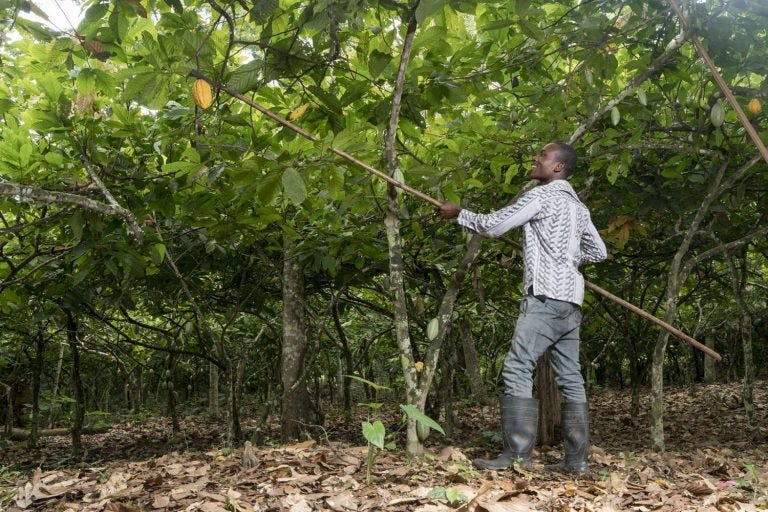
Agroforestry is helping to revitalise degraded cocoa plantations in West Africa for example.
Anthropocene: the name given by scientists to the era — estimated to have begun near the late 1950s — when the impact of one single species — humans — determined the fate of all other life on Earth.
Biomes are global-scale zones, generally defined by the type of plant life that they support in response to average rainfall and temperature patterns. For example, tundra, coral reefs or savannas.
Biomimicry: is an approach to innovation that seeks sustainable solutions to human challenges by emulating nature’s time-tested patterns and strategies. Founded by the awesome Janine Benyus, the Biomimicry Institute seeks to promote and develop design and social innovation according to the principles of nature.


A famous piece of biomimicry design were the ultimately-banned Speedo sharksin swimsuits.
Bioregion: a debated term. I’ll go for the World Resources Institute definition:
“A bio-region is a land and water territory whose limits are defined not by political boundaries, but by the geographical limits of human communities and ecological systems. Such an area must be large enough to maintain the integrity of the region’s biological communities, habitats, and ecosystems; to support important ecological processes, such as nutrient and waste cycling, migration, and stream flow; to meet the habitat requirements of keystone and indicator species; and to include the human communities involved in the management, use, and understanding of biological resources. It must be small enough for local residents to consider it home.
A bioregion would typically embrace thousands to hundreds of thousands of hectares. It may be no bigger than a small watershed or as large as a small state or province. In special cases, a bioregion might span the borders of two or more countries.

A bioregion is also defined by its people. It must have a unique cultural identity and be a place in which local residents have the primary right to determine their own development. This primary right does not, however, imply an absolute right. Rather, it means that the livelihoods, claims, and interests of local communities should be both the starting point and the criteria for regional development and conservation. Within that framework many other state, investor, and other economic interests must be accommodated.
Bioregionalism is the act of working out how to create a regenerative future in any specific, defined bioregion. Cascadia in Western America is a great example of a bioregional approach to the future (see above map).

In the UK, Bioregional is a not-for-profit consultancy led by Sue Riddlestone which supports towns and cities to develop their own One Planet Living approach to bioregional stability. We also have The Bioregional Learning Centre in Devon which looking at a bioregional strategy for the South Hams.
In the USA, the Capital Institute is bringing together a number of different bioregional initiatives and projects under the Regenerative Communities Network and Hubs.
Blended Finance: according to the OECD, blended finance is the strategic use of development finance for the mobilisation of additional finance towards sustainable development in developing countries. It is a mechanism designed to help deliver the UN Sustainable Development Goals.
Blind Spots: Nora Bateson has something beautiful to say on blinds spots.Blind spots show up as the reflex always to bestow uncritical faith in authorities (including one’s own superiors) and handed-down rules; the other, the quick dismissal of seemingly irreverent assertions. It’s a comfort blanket in times of uncertainty and volatility that we all need to be aware of when working towards a regenerative future.

Buckminster Fuller Institute: again not a piece of terminology, more of a legend. The institute covers just about everything that sits under the umbrella of Design Science Revolution.
Circular Economy: is synonymous with Ellen Macarthur for me. No-one has done more to promote the concept and value of shifting from sustainability to a circular approach to tackling our extractive, wasteful economy. Her Ted Talk still gives me the shivers.
Climate Emergency: thanks to Extinction Rebellion and Greta Thunberg, it seems there is at last some momentum from grassroots to government to recognise that we need radical action yesterday. The resurgence of non-violent activism of the 60s and 70s which served Martin Luther King, marks a new renaissance for resistance to business-as-usual. Long may it glue up the works.

Complexity: I like author Michelle Holliday’s story in The Age of Thrivabilityand I hope she won’t mind me paraphrasing it here. The wiring on an aircraft is complicated; it would take you a long time to figure out where everything had to go if you didn’t know. But you could study and learn. Put a crew and passengers on a flight, combine it with prevailing weather and you can’t possible predict or work out what might happen on that flight. Even if you studied all the people for years. The system’s behaviour is unknowable because it is complex.
Co-creative collaboration: is what nature does, and its how we should approach the future. Contrary to the most popular interpretation of Darwinism, although competition exists in nature, it’s not quite the dog-eat-dog world of high human finance that we might have been led to think. A great example is the collaboration between sea anemones and clownfish which is also a symbiotic relationship.
Commons (avoiding the tragedy of): I love Elinor Ostrom’s Governing the Commons — it’s been transformative to my thinking. Elinor Ostrom’s work deals with common pool resource (CPR) management, for which she won a Nobel Prize in economics in 2009. Ostrom outlines a few theories that we typically use to explain why common resource allocation will fail without intervention:
- Prisoner’s dilemma: A game where two individuals do not cooperate, even though they rationally ought to
- Tragedy of the commons: Individuals in the commons act according to their personal interest, thus depleting the resource
- Free-rider problem: Individuals enjoy a benefit without contributing back, because there is no cost associated with doing so
The underlying assumption is that without external intervention, individuals will act selfishly, without regard for collective interests.
Convergence: when the divergent parts of an ecosystem or biological entity or system come together in relationship to form a convergent whole with new characteristics and capabilities.

Daniel Christian Wahl: author of Designing Regenerative Cultures sneaks in at D because although he’s a name not a narrative word, he’s the author of one of the most seminal books on regenerative culture and he can’t be left out! He’s written multiple articles on this platform that are worth exploring.
Divergence: in every living system there are individual parts — for example the cells, organs and systems within our bodies or the different departments and people in an organisation. The more diverse the parts are able to be, the more likely it is that the whole will be adaptable, agile and resilient the system will be.
Doughnut Economics: economist Kate Raworth’s model for a just space for humanity, combining the Stockholm Resilience Centre’s Planetary Boundaries and the UN Sustainable Development Goals. A brilliant framework for creative conversations around innovation for a regenerative future. We need bridges like this that help us to have the dificult discussions we need to have to take us forward.


Duality: could be described in many ways. But here I’ll use binary thinking, the presentation of discussion as black/white, right/wrong.
Ecoliteracy: I’ll leave this one to Daniel Christian Wahl. He says: “Ecoliteracy is the ability to understand the organization of natural systems and the processes that maintain the healthy functioning of living systems and sustain life on Earth. An ecologically literate person is able to apply this understanding to the design and organization of our human communities and the creation of a regenerative culture.” Read more here.
Ecosystem: a biological community of interacting organisms and their physical environment — for example a marine ecosystem; a complex network or interconnected system — an entrepreneurial ecosystem like Silicon Valley
Ecosystem Services: a disputed term, but one definition is the benefits provided by an ecosystem that make human life possible and enjoyable. Clearly that’s an anthropocentric definition that doesn’t work for a regenerative mindset. So I think of it as what ecosystems do for people (that often aren’t recognised, protected or rewarded in any way) including providing food and water, controlling climate and disease, supporting nutrient cycles and oxygen production and offering cultural benefits to humans such as leisure pursuits.
EcoRestorationCamps — is a non-profit organisation founded by a movement of people who wanted an action-based solution to address accelerating climate change. Less of a terminology, more of a movement on a mission to restore degraded landscapes on a global scale. One for the out and out action takers who want to get their hands dirty.

Emergence: in systems theory refers to how collective properties arise form the properties of parts which come together. I see emergence happening when running creative strategy workshops where the collective intelligence in the room can bring into being a solution to a problem that no one individual could have created alone.
Gaia Theory: was written by scientist and environmentalist James Lovelock alongside microbiologist Lynn Margulis. The principle of gaia theory is that living organisms interact with their inorganic surroundings on Earth to form a synergistic and self-regulating, complex system that helps to maintain and perpetuate the conditions for life on the planet. Life creates the conditions conducive to life.
Green New Deal: brought back to life by Alexandria Ocasio-Cortez, the green new deal is a proposed stimulus package in the USA that aims to address climate change and economic inequality. It is opposed by President Trump. It is growing globally as a movement for people that want to take control of their environmental and economoic futures and to change the rules to deliver the investment and shifts in economic power needed to make the new green deal a reality.
Holistic agriculture — home of the Savory Institute who have done so much to pioneer regenerative land management through holistic approaches. Reinvigorating grasslands through a shift from industrial agriculture to rotational and mixed agriculture — mainly livestock — on his family farm has been the lifework of Will Harris of White Oak Pastures. You can hear both Will and Danielle Ibarra-Howell, CEO of Savory talk about their approaches below.
Regenerative Agriculture (Regenerative Series)
HOST: Jenny Andersson | We Activate the FutureSPEAKERS: Daniela Howell | CEO at Savory Institute. Roian Atwood |…
www.connectle.com
Indigenous Wisdom: regenerative culture recognises the wisdom and knowledge that exists about life creating the conditions conducive to life in the indigenous peoples of the world — and speaks respectfully about their culture and contribution to the future. Equally ancient wisdom also has a place in regenerative conversations.
Interbeing: the quality of not being separated, it means to inter-dependently co-exist.Of being able to acknowledge and live with other life in partnership.The suggested replacement word for the verb “to be,” coined by Vietnamese Buddhist Monk and scholar Thich Nhat Hanh. The meaning of interbeingrecognizes the dependence of any one person or thing as to all other people and objects.
Liminality: a period of time or state of mind characteried by ambguity and disorientation. We’ve all been there as teenagers. Standing with one leg in one world and one in the unknown future.
Maker Movement: The Maker Movement is a cultural phenomenon and is highly inclusive as everyone is welcome, regardless of their race, financial status or background. It is also changing the way we learn, discover and innovate and is seen as a valuable contributor to our local economy.
A makerspace is a workshop where professionals, novices, entrepreneurs or students alike can come together under one roof to collaborate and share ideas or work on individual projects with a firm focus on STEM (Science, Technology, Engineering and Mathematics) subjects. There are nearly over a 100 makerspaces across the UK. This movement has now also been firmly embedded into well know established universities and colleges and are viewed as a key selling point when talking to prospective students and forms a compelling argument for learning through hands-on exploration.
Makerspaces are also referred to as hackerspaces and Fab Labs and in certain instances provide communal facilities in an open accessible space, giving access to resources including digital fabrication and electronics.
Midwifing: has become a popular term for bringing forth the new regenerative future we want – much like a medical midwife helps bring new life into being.
Natural Capital: another hotly debated term and idea that might not have a real place in regenerative language, but gets included because it has growing backing in the world of business so we need to examine its place. According to the World Forum on Natural Capital, natural capital can be defined as the world’s stocks of natural assets which include geology, soil, air, water and all living things. It is from this natural capital that humans derive a wide range of services, often called ecosystem services (see above), which make human life possible. Should we use the language of capitalism to put a price on what is priceless? Although nature is priceless, it isn’t without value. By putting a monetary value on nature’s services to us, it enables the world to allocate the cost of ‘externalities’ i.e. damage done by primary production and processing businesses, to the environment. This may, in the future, lead to better legislation and financial measures to call organisations to account and prevent future degradation.

New Deal for Nature: is closely related to natural capital. Alongside WWF and Prince William, Sir David Attenborough called for a new deal for nature at WEF 2019. The World Economic Forum (WEF) is aiming to produce a report to be launched prior to the 15th CDB COP meeting in Beijing in 2020 which sets out a framework to mobilise governments, and which would essentially redefine the biodiversity agenda, such that the rather technical frame of protecting biological diversity becomes broadened into a movement that sets out a “New Deal for Nature” — something that captures wider public, business and political imaginations.
Organic: when we think of organic, we mostly think of food. Food grown without pesticides and fertilisers. Organic agriculture is part of the regenerative agriculture movement in that it does not deplete soil. It does not have to be fully regenerative in terms of providing high levels of animal welfare or biodiversity care, but in general an organic farm will be much more likely to provide both these things.
Permaculture — the practice of producing food, energy, etc, using ways that do not deplete the earth’s natural resources. Permaculture design principles are a great way to protect biodiversity in your own built environment. The Permaculture movement has spread all over the world. You can learn the basics in the UK in many places; start your voyage of discovery at The Permaculture Association.
Regenerative: regeneration is an interconnected process of becoming that all living systems participate in, where the healthy unfolding of every life form is inextricably connected with the healthy unfolding of everything else. This interconnected process includes the unfolding of everything from tiny bacteria cells, to insects, trees, animals and human beings, right through to schools, organisations, societies, and the Earth as a whole. The regenerative movement covers all major systems such as agriculture, energy, business, oceans, land management, but also regenerative culture. Check out my Regenerative Series of inteviews for Connectle platform.
Ash Buchanan summed up the different regenerative fields in his article on regenerative wellbeing:
- Regenerative design and development; “a process by which cities, towns, and other human communities bring themselves back into life-giving alignment with the ecological systems that support them. As a practice, it seeks to create a built environment and human systems that are capable of co-evolving with nature.” (Bill Reed, Pamela Mang, Ben Haggard and Regenesis)
- Regenerative economics which is based on the observation; “we can — and must — bring our economic theory and practice into alignment with our latest understanding of how the universe and our humanity actually work.” (John Fullerton). The EU Cost Action RESTORE which is concerned with REthinking Sustainability TOwards a Regenerative Economy — defined Regenerative Economy as ‘a product of human and societal vitality, rooted in ecological health and the inclusive development of human capabilities and potential’.
- Regenerative business which explores how the concept of regeneration applies “to business strategy with an emphasis on: human potential, work systems, resilience and growth.” (Carol Sandford)
- Regenerative cultures which asks; “how can we collaborate in the creation of diverse regenerative cultures adapted to the unique biocultural conditions of place?” (Daniel Christian Wahl)
- Regenerative agriculture which seeks to “provide food, water, clean air, a stable climate, biodiversity, good health, security and happiness.” (Commonland)
Resilience: back in 1973 C S Hollins published research into the complexity of change within ecosystems. He noted that while complex systems existed within a variety of different states of equilibrium, after they have received a shock, they can either bounce back to their original state or they will degenerate to a lesser state. In ecosystems services, resilience refers to the ability of a system to withstand shocks and have the inate elasticity to return to its former state. You can read more about this specific application of resilience in Daniel Christian Wahl’s Designing Regenerative Cultures or here on his profile page.
Sacred reciprocity: regenerative entrepreneur Maya Zuckerman describes this as a concept that most traditional societies have used . It’s a practice of being reciprocal with nature and all relations and relationships.
Salutogenesis: regenerative health — a design for the built environment that focuses on the improvement of health, rather than just an absence of bad health, or only reducing health impacts
Sovereignty: I first heard a modern idea of sovereignty when studying evolutionary biology and came across Joe Rogan’s infamous interview with Bret Weinstein and Jordan Peterson. I’ve learned more from Jordan Greenhall recently through Rebel Wisdom.
Stewardship: brings in the idea of care, responsibility, duty and reverence for the awesome but simple fact that, as far as we know, we are still the only planet in the vast ocean of the universe that contains life. Stewardship offers a sense of a spiritual calling to not just future generations of humanity, but future generations of life. To protect the idea of life on earth. As Kenneth Mikkelsen said in his talk to House of Beautiful Business — To be a good descendent and a good ancestor.
The Symbiocene: a name proposed by Glenn Albrecht for the post Anthropocene era. The key organizing principles of a Symbiocene society include:
- full and benign recyclability and biodegradability of all inputs and outputs;
- safe and socially just forms of clean, renewable energy;
- full and harmonious integration of human systems with biogeochemical systems at all scales;
- using the renewable resources of place and bioregion;
- the elimination of toxic waste in all aspects of production, consumption and enterprise;
- all species, great and small, having their life-interests and life-sharing understood and respected;
- evidence of a harmony or balance of interests where conflict is recognized as a sub-set of grand-scale cooperation;
- protection of symbiotic bonds between and within species at all scales; and
- re-establishment of symbiotic bonds where they have been severed in the Anthropocene.
Symmathesy: anew word for ‘System’, proposed by Nora Bateson. Symmathesy refers specifically to living systems and to their capacity for interacting with, and learning from, one another.

Symbiosis: is a relationship between two different biological entities, and can be mutual (anemone and clownfish/bees as pollinators), parasitic (mistletoe and host tree) commensalism, or amensalism. There are many great case studies of symbiotic relationships at Ask Nature.
Synthesise: I am a human synthesiser. I see life in patterns of interconnected ideas. I can join dots together easily and make one simple idea bigger and bolder by immediately connecting it to other parts of a system into which is can have impact. Synthesisers as humans are polymaths, neo-generalists — people who have many layers ofexpertise held together by a fine red thread. They are people whose skills should be much more in demand than they are for this era of complexity but we are still addicted to our notion of experts.
Systems Thinking: a simple but profound idea that the whole is greater than the sum of its parts. Systems thinking is interested in the inter-relatedness of parts, and of synthesising what happens or what impact occurs through the pattern of interaction between an organism and the environment in which it lives. The systems thinkers who have most influenced me include Fritjof Capra, Donella Meadows, Nora Bateson, biologist Humberto Maturana, Peter Senge. But there are many more.
Tensegrity: couldn’t leave Buckminster Fuller out of this list! Tensegrity is an elision of ‘tension + integrity’. Buckminster Fuller, building on the highly original sculptures of Kenneth Snelson, coined the term, to indicate that the integrity of the structure derived from the balance of tension members, not the compression struts. Tensegrities can be built in hierarchies — each element of a tensegrity can be built out of smaller tensegrities — making for the most efficient use of materials, an evolutionary imperative. This efficiency is also a very important property, as the rule of biological evolution is efficiency — getting the most performance from the least material.
Theory U — another model, but one which allows us to think and feel into the emerging future as we use it to develop transformational change. As it’s based on the creative process, I find this easy to use in almost all circumstances as it is highly adjustable in terms of the level of consciousness of the audience. You can go as ‘deep’ or as light as you like. You can learn more through The Presencing Institute or ULab. Thanks Otto Scharmer et al!
Thrivability: Seb Paquet, a co-founder of the innovative Enspiral network of initiatives, describes thrivability like this:
Thrivability is a philosophy of work that is centred on perfroming actions that are generative. This is in contrast to sustainability. I associate thrivability with spirals. Something that is thrivable will spiral out, constantly improving, becoming more beautiful, cleaner or more enjoyable. It is a continual unfolding.
Author Michelle Holliday describes it as ‘a continual and purposeful drive to create the fertile conditions for life to thrive at the levels of the individual, the organisation, the community and the biosphere.’
Transition Network: again a movement not a noun but should have been in from the start. One of the most successful experiments in community activation and imagination for a fossil-free future, Transition has many active communities around the world achieving genuine grassroots and regional impact within town and village communities. In Europe, Belgium and France have been particularly successful, and of course Totnes in Devon is the movement’s flagship town.
Unintended Consequences: are freezing some governments (IMHO) from taking the action they need to. In a complex world it is almost impossible to predict outcomes of taking action within a system. Of course the precautionary principle applies, but even so, unintended consequences are everyone’s worst nightmare. This video is probably the best I’ve ever seen to describe UC.
Weaving connections and collaborations replicates the way in which nature brings different communities together for mutual benefit. You’ll frequently hear people in the regenerative community refer to themselves as weavers — a recognition of the complexity we live and work in, but also the value of people who bring polymathic approaches to regeneration.
Warm Data: recognizing that complex problems are not susceptible to predetermined solutions, the International Bateson Institute has taken up the task of generating a category of information specifically dedicated to description of contextual relational interaction, calling it “Warm Data”. The units of knowledge by which reasoning and calculations are made namely, data, information, and facts, suggest processes of research into which we place our hopes for better understanding of the world we inhabit.
Xenophilia — Awareness and understanding that enables inclusive design for ‘the other’, i.e. not just human-centric design, but designing as part of nature not apart from nature, also, importantly a holistic design for all that is socially just not only for wealthy, influential, our culture.
So. What have I missed out? What would you like to add? Or is there anything you would like to edit? Let me know in the comments below.
Jenny Andersson is a creative strategist helping organisations and leaders to develop strategic narratives. She designs collective intelligence journeys and workshops to help organisations shape regenerative strategies and communications.
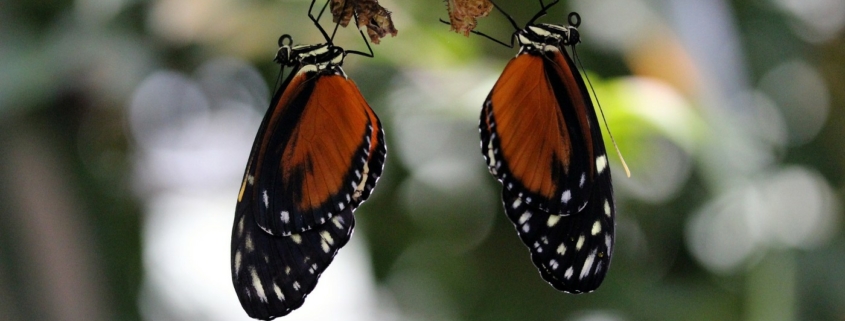

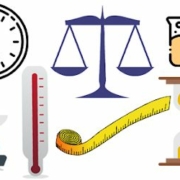



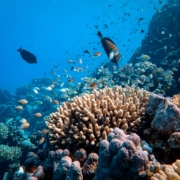
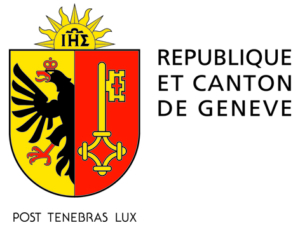
Leave a Reply
Want to join the discussion?Feel free to contribute!